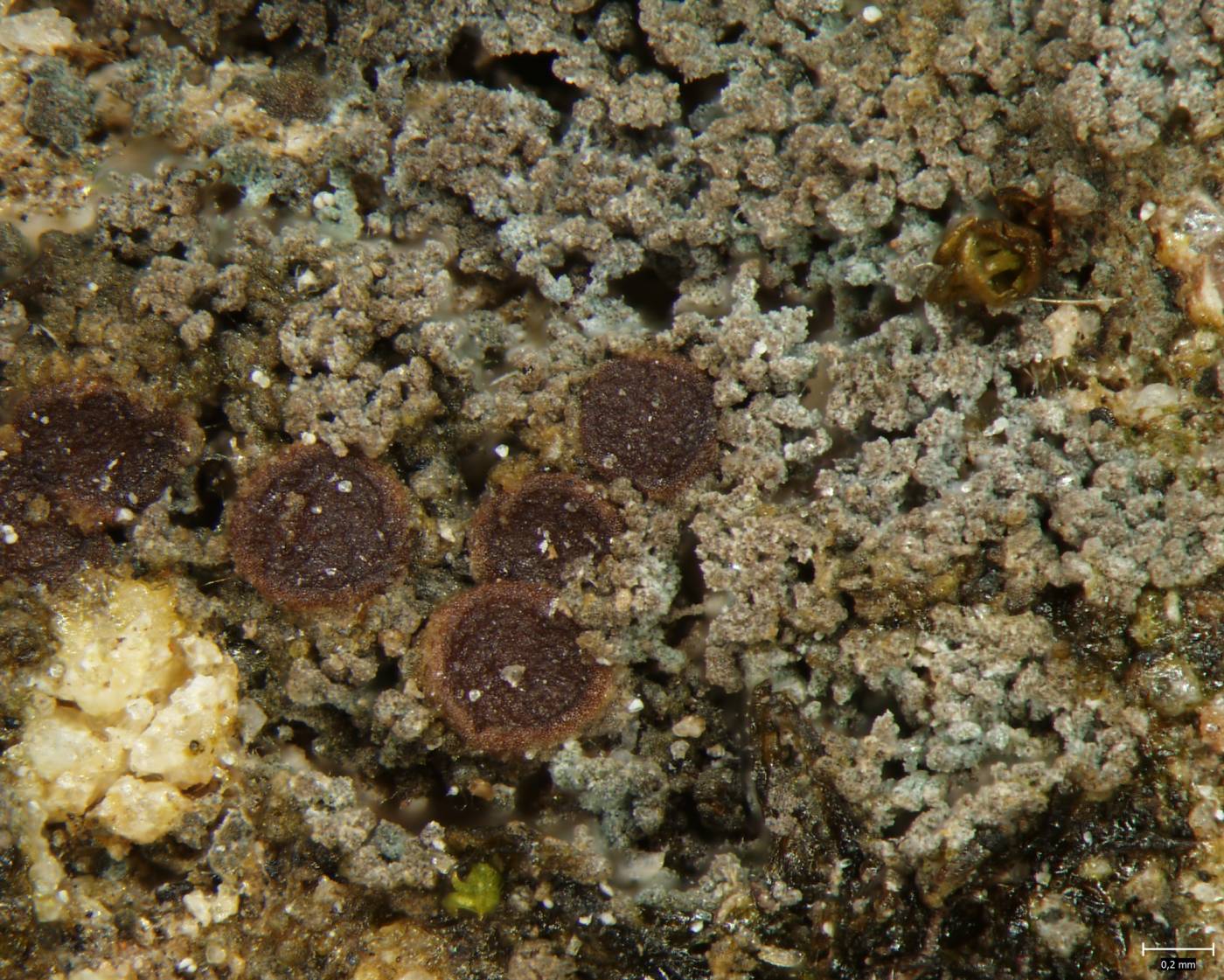A very tiny Leptogium. Its thallus is composed of brownish areoles, densely covered by grey-brown to bluish, leprose, soredia-like granules. The primary thallus is sometimes hardly detectable and resembles two species with a similar ecology – Gregorella humida and Fuscopannaria nebulosa.
Leptogium byssinum is a pioneer lichen that usually grows on sun-exposed or only slightly shaded sandy soils rich in minerals or calcium. These are often anthropogenic habitats but sometimes also natural ones. The species seems to prefer disturbed oligotrophic biotopes which are becoming scarcer in the current European landscape. Consequently, also the lichen is declining. In the Czech Republic, L. byssinum has been recently recorded overgrowing calcium-enriched sand dumps in the Chvaletice sedimentation basin (Palice & Soldán 2004), on uranium heaps near Příbram, in the Middle Vltava regions etc. In the latter region, the species occurs in sandpits and acidophilous grasslands with sandy soil generated by granodiorite weathering (Malíček 2016).
Literature: Palice Z. & Soldán Z. (2004): Lichen and bryophyte species diversity on toxic substrates in the abandoned sedimentation basins of Chvaletice and Bukovina. – In: Kovář P. [ed.], Natural recovery of human-made deposits in landscape (biotic interactions and ore/ash-slag artificial ecosystems), p. 200–221, Academia, Praha. Malíček J. (2016): Zajímavé nálezy lišejníků ve středním Povltaví I. – epifytické a terikolní druhy. – Bryonora 57: 45–64.
taxonomic classification:Ascomycota → Lecanoromycetes → Peltigerales → Collemataceae → Leptogium
most frequented synonyms:Epiphloea byssinaRed List (Liška & Palice 2010):VU – vulnerable
Red List (Malíček 2023):C2 – strongly endangered
Occurrence in the Czech Republic
All records: 18, confirmed 18. One click on a selected square displays particular record(s), including their source(s).
